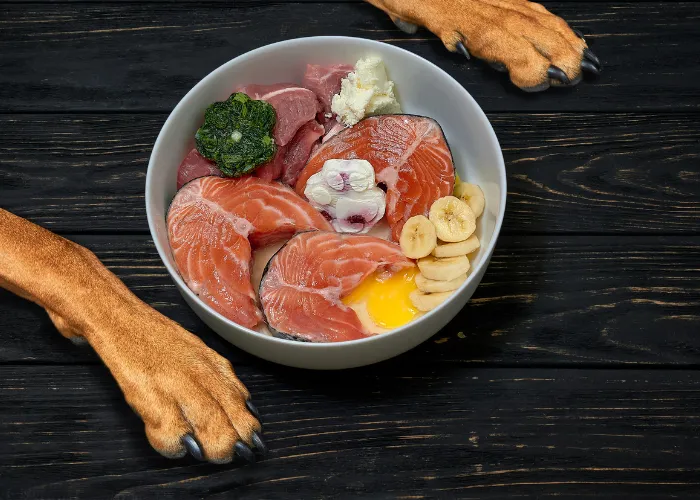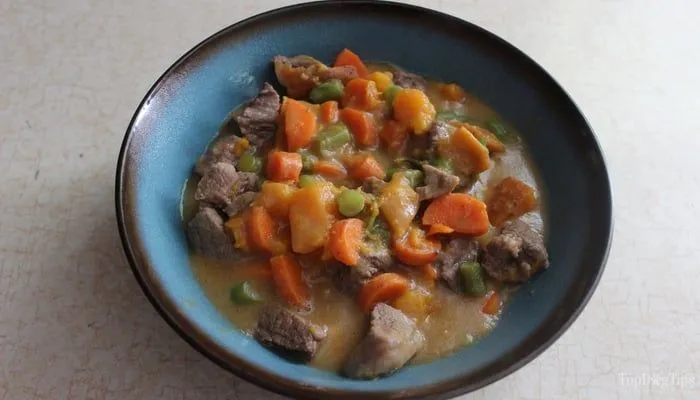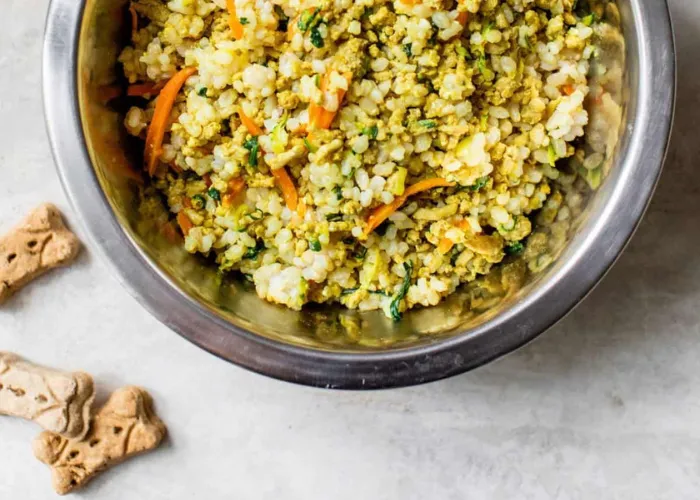Is your beloved canine companion suffering from constant scratching, hair loss, or persistent itchy skin? These discomforting symptoms are often tell-tale signs of allergies. Shifting to homemade dog food can be a game-changer, addressing their specific dietary needs and potentially alleviating these issues. This comprehensive guide will delve into the causes and symptoms of skin allergies in dogs, highlight the remarkable benefits of a homemade diet, present 10 carefully crafted recipes, and offer essential tips for a smooth transition, helping to minimize problems like hot spots, ear infections, and flea allergy dermatitis. If you’re looking for more dog food recipes for dogs with allergies, our website offers a variety of options to explore.
Understanding Canine Allergies: Causes and Symptoms
Skin allergies in dogs, medically known as atopic dermatitis, can stem from a variety of sources. These can range from environmental triggers like pollen, dust mites, and mold to more specific culprits such as flea saliva, certain proteins in commercial dog foods, or even contact irritants. Identifying the specific allergen is crucial for effective management and long-term relief for your dog.
Common symptoms of canine skin allergies are often quite noticeable and can significantly impact your dog’s quality of life. These include incessant itching, which can manifest as biting, licking, or scratching at specific areas or all over their body. You might also observe hair loss, particularly in areas they frequently scratch or chew, leading to bald patches or thinning fur. Skin infections, often secondary to the scratching, can appear as redness, inflammation, scabs, or pustules. Recurring ear infections are another common sign, as the ears are often affected by the same allergic inflammation that impacts the skin. Other symptoms may include paw chewing, rubbing against furniture, or a greasy, flaky coat. A veterinarian can help pinpoint the exact cause through diagnostic tests, which may include allergy testing, elimination diets, or skin scrapes.
Essential Nutrients for Allergy-Prone Dogs
Crafting homemade dog food for allergies requires a focus on specific nutrients that promote skin health, bolster the immune system, and reduce inflammatory responses. Incorporating these key components can make a significant difference in managing your dog’s allergic reactions.
One of the most vital nutrient groups is omega-3 fatty acids. These powerful anti-inflammatory agents are crucial for maintaining healthy skin and a shiny coat. Excellent sources include fish like salmon, sardines, and mackerel, as well as flaxseed oil and chia seeds. Antioxidants, derived primarily from fruits and vegetables, help combat cellular damage caused by inflammation and support overall immune function. Berries, dark leafy greens, carrots, and pumpkin are all rich in these beneficial compounds. Lean proteins are essential for muscle maintenance and overall health, but for allergic dogs, selecting novel or easily digestible proteins can prevent reactions. Options such as turkey, venison, duck, lamb, or certain whitefish can be less allergenic than common proteins like beef or chicken for some dogs. Finally, soluble fibers play a critical role in digestive health, which is closely linked to immune function and allergy management. Ingredients like pumpkin, sweet potatoes, and green beans provide soluble fiber, aiding digestion and nutrient absorption.
The Benefits of Homemade Dog Food for Allergy Relief
Switching to homemade dog food offers a multitude of advantages for dogs struggling with allergies and itchy skin, providing a tailored approach to their dietary needs. The primary benefit lies in complete control over ingredients. Unlike commercial foods that can contain hidden allergens, fillers, or artificial additives, homemade meals allow you to handpick every component. This enables the elimination of specific allergens that trigger your dog’s reactions, such as common proteins, grains, or synthetic preservatives.
Moreover, a homemade diet can significantly support a healthier immune system. Fresh, whole ingredients are packed with natural vitamins, minerals, and antioxidants that are often diminished in processed kibble. This nutritional richness helps to strengthen your dog’s natural defenses, making them less susceptible to inflammatory responses and allergic flare-ups. Ingredients like sweet potato, known for its soothing properties and rich nutrient profile, can be specifically included to calm irritated skin and promote healing. By nourishing your dog from the inside out with a balanced, fresh diet, you may observe a reduction in the severity and frequency of allergic reactions, potentially lessening the reliance on allergy shots or medications and their associated side effects. This personalized approach empowers you to directly address your dog’s unique sensitivities, leading to noticeable improvements in their skin, coat, and overall well-being.
Top 10 Homemade Dog Food Recipes for Allergies
When preparing homemade dog food, it’s essential to consult with your veterinarian to ensure the recipes meet your dog’s specific nutritional requirements, especially for those with allergies. The recipes provided are general guidelines. For determining portion size, a common rule of thumb is to feed approximately 1/2 cup of food per every 10 lbs of your dog’s body weight, or roughly 2% of their body weight daily, adjusted based on activity level and individual needs.
1. Turkey and Sweet Potato Delight
 Cooked ground turkey mixed with mashed sweet potatoes and green peas, ready for a dog's meal
Cooked ground turkey mixed with mashed sweet potatoes and green peas, ready for a dog's meal
Makes 2 cups of food.
Ingredients:
- 1 cup cooked and ground turkey
- 1/2 cup mashed sweet potatoes
- 1/4 cup cooked peas
- 1 tablespoon olive oil
Instructions:
- In a bowl, combine the cooked and ground turkey, mashed sweet potatoes, and cooked peas.
- Drizzle the olive oil over the mixture and mix well.
- Serve the meal to your dog, ensuring it is at an appropriate temperature.
2. Salmon and Quinoa Medley
 Flaked salmon, quinoa, chopped carrots, and green beans mixed together in a bowl
Flaked salmon, quinoa, chopped carrots, and green beans mixed together in a bowl
Makes 2 cups of food.
Ingredients:
- 1/2 cup cooked salmon, flaked
- 1/2 cup cooked quinoa
- 1/4 cup steamed carrots, chopped
- 1/4 cup steamed green beans, chopped
Instructions:
- In a bowl, combine the cooked salmon, cooked quinoa, steamed carrots, and steamed green beans.
- Mix the ingredients thoroughly until well combined.
- Allow the meal to cool before serving it to your dog.
3. Beef and Pumpkin Stew
 A hearty beef stew with chunks of meat, pumpkin, brown rice, and spinach in a bowl
A hearty beef stew with chunks of meat, pumpkin, brown rice, and spinach in a bowl
Makes 1 1/4 cups of food.
Ingredients:
- 1/2 cup cooked and ground beef
- 1/4 cup pureed pumpkin
- 1/4 cup cooked brown rice
- 1/4 cup chopped spinach
Instructions:
- In a saucepan, combine the cooked and ground beef, pureed pumpkin, cooked brown rice, and chopped spinach.
- Heat the mixture over low heat, stirring occasionally, until heated through.
- Let the stew cool down before serving it to your dog. For dogs with specific sensitivities, beef can sometimes be an allergen. Consider novel protein sources if beef is problematic for your pet, or if you need to know what type of meat is good for dogs.
4. Chicken and Rice Casserole
 A casserole dish filled with shredded chicken, white rice, broccoli, and grated carrots
A casserole dish filled with shredded chicken, white rice, broccoli, and grated carrots
Makes 1 1/4 cups of food.
Ingredients:
- 1/2 cup cooked and shredded chicken
- 1/4 cup cooked white rice
- 1/4 cup steamed broccoli, chopped
- 1/4 cup grated carrots
Instructions:
- Preheat the oven to 350°F (175°C).
- In a baking dish, combine the cooked and shredded chicken, cooked white rice, steamed broccoli, and grated carrots.
- Mix the ingredients well and spread them evenly in the baking dish.
- Bake the casserole for approximately 20 minutes or until heated through.
- Allow it to cool before serving it to your dog.
5. Lamb and Lentil Stew
 A bowl of lamb and lentil stew, mixed with pureed sweet potatoes and chopped zucchini
A bowl of lamb and lentil stew, mixed with pureed sweet potatoes and chopped zucchini
Makes 1 1/4 cups of food.
Ingredients:
- 1/2 cup cooked and ground lamb
- 1/4 cup cooked lentils
- 1/4 cup pureed sweet potatoes
- 1/4 cup chopped zucchini
Instructions:
- In a saucepan, combine the cooked and ground lamb, cooked lentils, pureed sweet potatoes, and chopped zucchini.
- Heat the mixture over low heat, stirring occasionally, until warmed.
- Let the stew cool down before serving it to your dog.
6. Venison and Sweet Pea Blend
Makes 1 cup of food.
Ingredients:
- 1/2 cup cooked and diced venison
- 1/4 cup cooked sweet peas
- 1/4 cup cooked quinoa
- 1 tablespoon coconut oil
Instructions:
- In a bowl, combine the cooked and diced venison, cooked sweet peas, cooked quinoa, and coconut oil.
- Mix the ingredients thoroughly until well combined.
- Allow the blend to cool before serving it to your dog. Venison is often considered a special dog food ingredient due to its novel protein status, making it an excellent choice for allergy management.
7. Whitefish and Carrot Mix
Makes 1 cup of food.
Ingredients:
- 1/2 cup cooked and flaked whitefish
- 1/4 cup steamed carrots, mashed
- 1/4 cup cooked brown rice
- 1 tablespoon fish oil
Instructions:
- In a bowl, combine the cooked and flaked whitefish, steamed carrots, cooked brown rice, and fish oil.
- Ensure the mixture is at an appropriate temperature before serving it to your dog.
- Mix the ingredients thoroughly until well combined.
8. Turkey and Oatmeal Bake
Makes 2 cups of food.
Ingredients:
- 1 cup cooked and shredded turkey
- 1/2 cup cooked oatmeal
- 1/4 cup cooked green peas
- 1/4 cup grated zucchini
Instructions:
- Preheat the oven to 350°F (175°C).
- In a mixing bowl, combine the cooked and shredded turkey, cooked oatmeal, cooked green peas, and grated zucchini.
- Mix the ingredients well and spread the mixture evenly in a baking dish.
- Bake for approximately 25 minutes or until heated through and lightly browned.
- Allow it to cool before serving it to your dog.
9. Duck and Green Bean Delight
Makes 1 cup of food.
Ingredients:
- 1/2 cup cooked and shredded duck
- 1/4 cup cooked green beans, chopped
- 1/4 cup cooked quinoa
- 1 tablespoon flaxseed oil
Instructions:
- In a bowl, combine the cooked and shredded duck, cooked green beans, cooked quinoa, and flaxseed oil.
- Mix the ingredients thoroughly until well combined.
- Ensure the mixture is at an appropriate temperature before serving it to your dog.
10. Homemade Bone Broth
This recipe is an additive to your dog’s meal.
Ingredients:
- 2 pounds of raw bones (such as beef or chicken)
- Water
- Optional: Vegetables like carrots and celery
Instructions:
- Preheat the oven to 400°F (200°C).
- Place the raw bones on a baking sheet and roast them in the oven for 30 minutes to enhance flavor.
- Transfer the bones to a large pot and fill it with enough water to cover the bones completely.
- If desired, add vegetables like carrots and celery for additional flavor.
- Bring the mixture to a boil and then reduce the heat to a simmer.
- Allow the broth to simmer for 8-24 hours to extract the nutrients from the bones.
- Strain the broth to remove any bone fragments or vegetables.
- Once cooled, serve the bone broth as a delicious and nutritious addition to your dog’s meals. Bone broth can be an excellent way to add nutrients to your dog’s diet, especially when considering what should you feed a sick dog for added hydration and gentle nutrition.
Smooth Transitioning: Tips for Switching to a Homemade Diet
Transitioning your dog to a homemade diet, especially to manage allergies, requires a patient and strategic approach to prevent digestive upset and ensure acceptance. Abrupt changes in diet can lead to issues such as vomiting, diarrhea, or a refusal to eat the new food.
Start by gradually introducing the new homemade food alongside their current commercial diet. A good strategy is to replace a small portion of their old food with the new food over a period of 7-10 days. For example, on days 1-3, replace about 25% of their meal with homemade food. On days 4-6, increase this to 50%, and by days 7-10, you can aim for 75-100% homemade food. This slow introduction allows your dog’s digestive system to adapt to the new ingredients and textures.
Throughout the transition, monitor your dog’s response meticulously. Observe for any signs of digestive upset, changes in stool consistency, or a worsening of allergy symptoms. If any adverse reactions occur, slow down the transition or revert to the previous stage until your dog adjusts. Pay close attention to their skin and coat; ideally, you should start seeing improvements in itching, redness, and overall skin health.
Crucially, consult with your veterinarian before making any significant dietary changes, especially for dogs with existing health conditions or severe allergies. Your vet can provide personalized guidance, ensure that the homemade recipes are nutritionally complete and balanced for your dog’s specific needs, and help you identify potential allergens or nutrient deficiencies. They can also advise on appropriate supplements if necessary, and help rule out other underlying health issues that might mimic allergy symptoms. This professional guidance is paramount to ensuring your dog receives optimal nutrition and the best possible outcome for their allergy management. For situations where your dog is unwell, it’s also important to know what can i feed my dog when sick to provide comfort and gentle nourishment.
Conclusion
Homemade dog food provides a natural, effective, and highly customizable solution for dogs battling allergies and persistent itchy skin. By understanding the common causes and symptoms of canine skin allergies, focusing on key anti-inflammatory and immune-supporting ingredients like omega-3s, antioxidants, and lean proteins, and utilizing the top 10 homemade dog food recipes outlined in this article, you can take a proactive step towards alleviating your dog’s discomfort. A well-prepared homemade diet can promote a healthier immune system, reduce inflammatory responses, and significantly lower the risk of secondary skin infections. Remember, a successful transition to homemade dog food demands patience, careful observation, and, most importantly, the professional guidance of your veterinarian to ensure all your dog’s specific dietary and health needs are comprehensively met. Empower your dog with a healthier, happier life free from the constant irritation of allergies.
